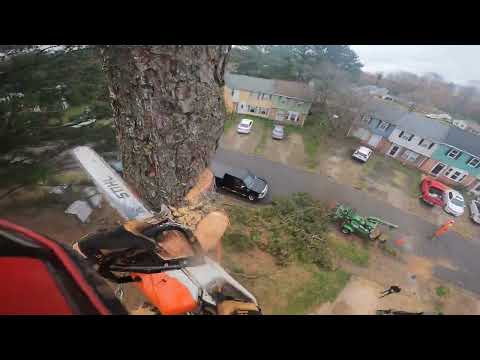Explore the World of Arborists: Job Description and Salary

Arborist Job Description Template
An arborist is a professional who specializes in the care and maintenance of trees. They are knowledgeable about the biology, cultivation, and management of trees, and they apply this expertise to ensure the health, safety, and aesthetic appeal of trees in various settings. Arborists perform a wide range of tasks including tree pruning, tree removal, tree planting, and tree health diagnosis. They use specialized tools and techniques to carefully prune branches, remove dead or hazardous trees, and plant new trees in appropriate locations. They also assess the condition of trees and diagnose any diseases or pests that may be affecting them. Additionally, arborists provide advice and guidance on tree care to homeowners, property managers, and other clients. One of the most important roles of an arborist is to ensure the safety of trees. They inspect trees for signs of weakness, disease, or structural problems that could pose a risk to people or property. If necessary, they may recommend measures such as cabling or bracing to support weak branches or tree trunks. Another crucial aspect of an arborist’s job is promoting the overall health of trees. They assess the nutritional needs of trees and provide appropriate fertilization. They also identify and treat diseases and pests that can harm trees, using environmentally friendly methods whenever possible. In summary, arborists play a vital role in preserving and caring for trees. Their knowledge and skills are essential for maintaining the beauty and safety of trees in both urban and natural environments.Arborist Responsibilities
- Assessing the health and condition of trees
- Identifying and diagnosing tree diseases and pests
- Pruning and trimming trees to promote healthy growth and shape
- Removing dead or hazardous tree limbs or entire trees
- Planting and transplanting trees
- Applying fertilizers and pesticides to trees as needed
- Consulting with clients on tree care and maintenance
- Providing advice on tree selection and placement
- Managing tree inventory and records
- Operating and maintaining tree care equipment
- Following safety protocols and regulations
Arborist Requirements
How Much Does A Arborist Make?
Arborist Salary
| Job Title | Salary |
|---|---|
| Tree Climber | $40,000 |
| Arboricultural Consultant | $60,000 |
| Tree Surgeon | $50,000 |
| Arborist Crew Leader | $55,000 |
An arborist is a professional who specializes in the care and maintenance of trees. They are trained to assess the health of trees, diagnose diseases and pests, and provide appropriate treatments. Arborists also perform tree pruning, removal, and planting. The salary of an arborist can vary depending on factors such as experience, location, and job title. The table above provides an overview of average salaries for different arborist positions. It is important to note that these figures are just estimates and actual salaries may vary.
Arborist Salaries by Country
Top Paying Countries for Arborist
| Country | Average Salary (USD) |
|---|---|
| United States | $50,770 |
| Canada | $45,000 |
| Australia | $55,000 |
| Germany | $41,000 |
| United Kingdom | $35,000 |
An arborist, also known as a tree surgeon, is a professional trained in the cultivation, management, and maintenance of trees. The salary of an arborist can vary depending on the country they work in. According to available data, some of the top paying countries for arborists include the United States, Canada, Australia, Germany, and the United Kingdom. These countries offer competitive salaries ranging from $35,000 to $55,000 per year on average. It is important to note that salaries may vary based on factors such as experience, qualifications, and demand for arborists in each specific country.
A video on the topic Arborist
Video Source : Really Tall Tree GuyInterview Questions for Arborist
1. What is an arborist?
An arborist is a trained professional who specializes in the care and maintenance of trees. They are knowledgeable about tree biology, diseases, pruning techniques, and tree preservation.
2. What are the main responsibilities of an arborist?
The main responsibilities of an arborist include assessing tree health, diagnosing diseases or infestations, pruning trees for safety and aesthetics, planting new trees, removing dead or hazardous trees, and providing advice on tree care and maintenance.
3. What qualifications or certifications are required to become an arborist?
To become an arborist, one can pursue a degree in arboriculture, forestry, or a related field. Additionally, obtaining certifications from recognized organizations such as the International Society of Arboriculture (ISA) can demonstrate expertise and credibility in the field.
4. Why is tree pruning important?
Tree pruning is important for several reasons. It helps maintain tree health by removing dead or diseased branches, improves tree structure and appearance, promotes better air circulation and sunlight penetration, and reduces the risk of falling branches or hazards.
5. How do arborists assess tree health?
Arborists assess tree health by examining various factors such as leaf color and size, presence of pests or diseases, overall tree structure and stability, bark condition, and signs of decay or damage. They may also use specialized tools like resistograph or sonic tomography to detect internal decay.
6. What are some common tree diseases and pests arborists deal with?
Arborists commonly deal with diseases such as Dutch elm disease, oak wilt, and apple scab. They also encounter pests like emerald ash borer, gypsy moth, and pine beetles. Identifying and treating these issues is crucial for maintaining tree health.
7. How do arborists determine if a tree needs to be removed?
Arborists consider several factors when determining if a tree needs to be removed, including the presence of structural issues, extensive decay or disease, severe storm damage, significant leaning or root damage, proximity to structures or power lines, and overall tree health. Safety is always a top priority.
8. What techniques do arborists use for tree pruning?
Arborists use various pruning techniques, such as crown thinning (removing select branches to increase light penetration), crown raising (removing lower branches for clearance), crown reduction (reducing the overall size of the tree), and deadwooding (removing dead branches).
9. How can arborists help with tree preservation during construction projects?
Arborists can help with tree preservation during construction projects by implementing measures to protect tree roots, trunk, and canopy from damage. They can also provide guidance on appropriate construction techniques to minimize the impact on trees and ensure their long-term health.
10. What are some best practices for tree care and maintenance?
Some best practices for tree care and maintenance include regular pruning to remove dead or hazardous branches, watering trees during dry periods, mulching to conserve moisture and control weeds, avoiding excessive soil compaction around trees, and conducting routine inspections for signs of pests or diseases.






